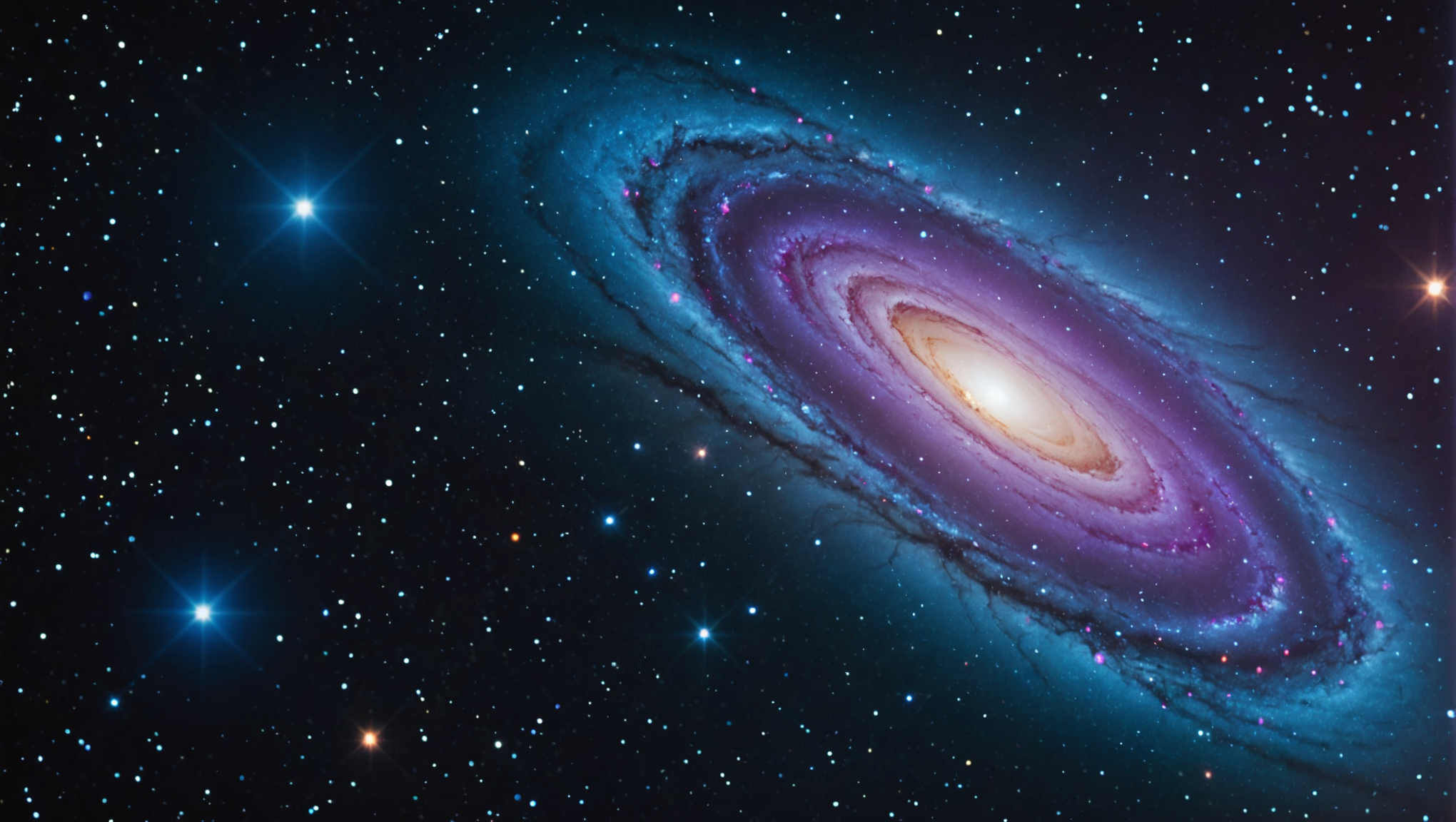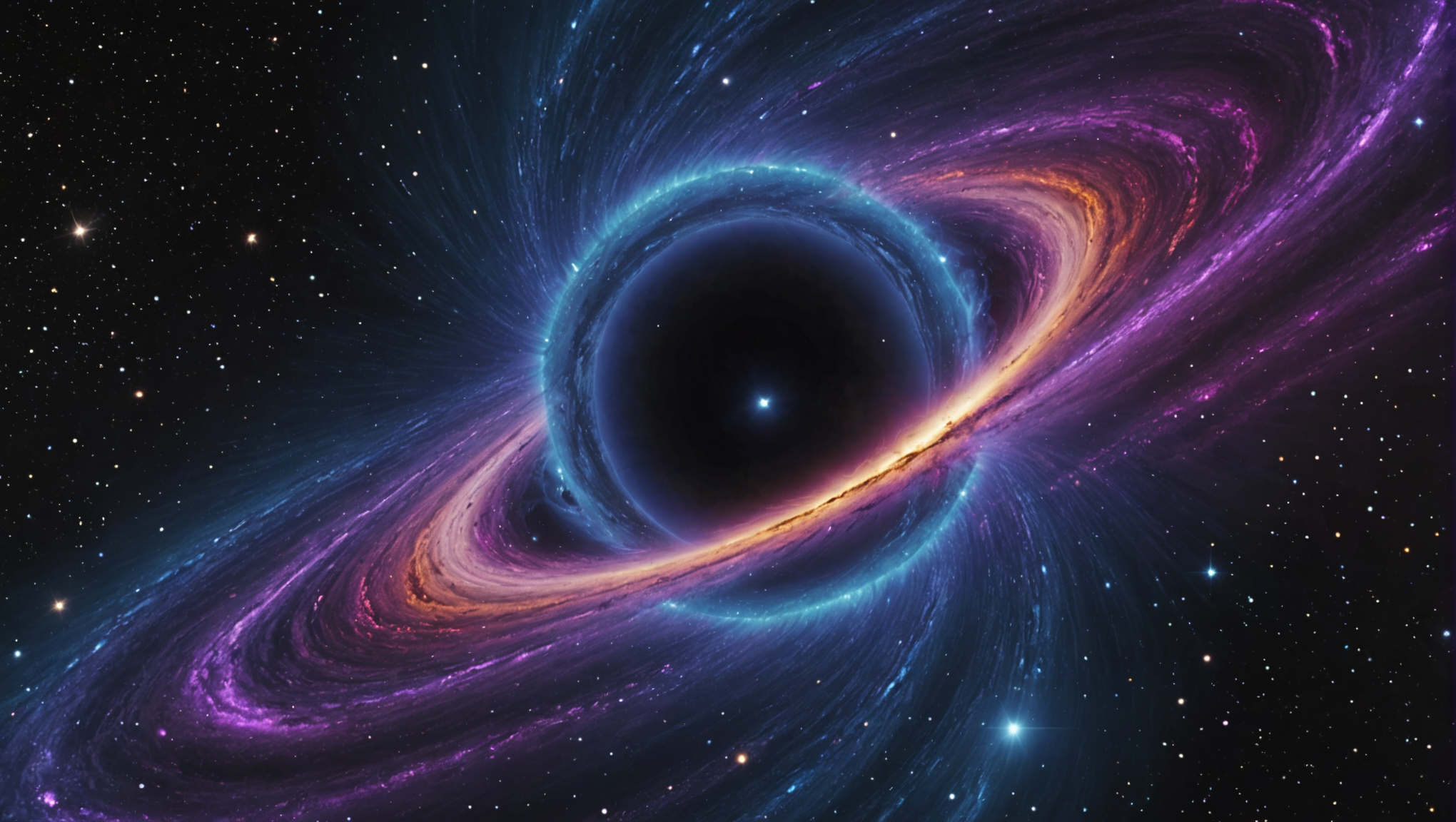Exploring the Mysteries of the Cosmic Frontier

Understanding the Cosmic Landscape Beyond Observations
Imagine a realm that stretches beyond the reach of our senses, where the laws of physics as we understand them bend and twist into new forms. That’s the cosmic landscape that beckons scientists and astronomers, challenging their understanding and compelling them to explore its mysteries. What we see in the night sky is just a shadow of the immense truths hiding in the cosmos. Each star, planet, and celestial body we observe tells only part of the story, and it is the unseen forces and phenomena that shape the universe that hold the key to the grand narrative of existence.
In our quest to understand this vast cosmic canvas, we lean on advanced observational techniques that allow us to peer deeper into the universe. Traditional telescopes rely on the detection of visible light, but the universe offers a kaleidoscope of wavelengths across the electromagnetic spectrum — from radio waves to x-rays and gamma rays. These diverse observational tools reveal information about celestial objects this is otherwise obscured by the limits of our visual perception. For instance, the study of quasars, extraordinary celestial entities powered by supermassive black holes, illustrates the vast differences between how we see things on Earth and what is happening in the depths of space.
The power of quasars lies in their ability to outshine entire galaxies while offering a glimpse into the state of the universe billions of years ago. Their light acts as a time capsule, allowing astronomers to investigate conditions that prevailed during the early stages of galaxy formation and evolution. By studying the fluctuations in brightness of these luminous objects, researchers can unravel the complexities of how matter interacts with supermassive black holes, transforming our understanding of cosmic processes.
Moreover, the significance of dark matter cannot be overstated in this cosmic landscape. Though we cannot directly observe this elusive substance, its gravitational effects manifest in the formation and structural integrity of galaxies. Estimates suggest that dark matter comprises nearly 27% of the universe’s mass-energy content, acting as the invisible scaffolding that holds galaxies together while influencing their movements. Its presence can be inferred by looking at how visible matter behaves, particularly in regions with high-density galaxies that orbit each other. Without accounting for dark matter, our models of cosmic evolution would crumble, leaving us with an incomplete picture of the universe’s architecture.
However, the nature of cosmic observations requires relentless scrutiny. Identifying anomalies within celestial measurements can often yield unexpected insights, leading to revolutionary shifts in our knowledge. For example, scientists monitoring star formations have stumbled upon clusters that defy established models, suggesting that our understanding of birth and evolution within the cosmos needs refinement. The intricacies of star formation go beyond the mere collapse of gas clouds; they intertwine with the behaviors of dark matter, cosmic rays, and possibly even interactions with other galaxies. Each deviation from established patterns invites deeper exploration and opens doors to new hypotheses about how the universe operates.
As we venture further into the depths of space with telescopes equipped for multi-wavelength observations, the data produced continues to enrich our knowledge. In particular, the reception of signals from cosmic rays and other high-energy particles offers a rare view into the cataclysmic events of the universe, such as supernovae and gamma-ray bursts. These phenomena illuminate the processes by which heavy elements are synthesized and disseminated throughout the cosmos. By tracing the origins of these particles, we uncover the dynamics of elemental creation that fuel the ongoing evolution of stars and galaxies.
Through this lens, the cosmos strengthens its narrative, intertwining elements from different scales and perspectives. Our understanding extends beyond what we can see or even infer from gravity. It taps into quantum mechanics, linking information theory with the fundamental fabric of the universe. The ongoing dialogue between various fields of physics, such as astrophysics and cosmology, shapes our comprehension of reality and challenges our limitations as observers. These insights extend into philosophical territory, urging us to contemplate our existence and relationship with the cosmos.
However, as exciting as these developments can be, they also invoke caution. The deeper we explore the intricacies of the universe, the more complex our findings become. This can lead to moments of bewilderment, particularly as we confront ideas that challenge our comprehension of causal relationships and linear time. Nevertheless, it is this very complexity, with its layers of mystery and diversity, that drives our scientific inquiry forward.
Ultimately, the cosmic landscape is an ever-expanding frontier, revealing that our quest for understanding is as important as the answers we seek. Each new observation, each scintillating discovery, opens up fresh pathways for thought — extending the boundaries of human knowledge and expressing the innate curiosity that resides within us. We find ourselves at the intersection of science, philosophy, and the emotions that reside in our pursuit of meaning within the astonishing vastness of the universe. The journey of exploration is as fundamental to our existence as the discoveries themselves, propelling us toward a future where the unknown beckons us to take another step deeper into the cosmic narrative.

The Interplay of Black Holes and Dark Matter
The relationship between black holes and dark matter is a fascinating interplay that reveals significant insights into the structure and evolution of the universe. Supermassive black holes, often lurking at the centers of galaxies, have been shown to correlate with the mass distribution of their host galaxies. This association suggests that as black holes grow by consuming surrounding matter, they influence the gravitational framework in which galaxies evolve. In turn, the density and distribution of dark matter can shape the paths along which black holes draw in material. It’s a cosmic dance that intricately links the fates of these two enigmatic entities.
To understand the mechanisms at play, it is essential to ponder how dark matter acts as a scaffolding for galaxies and provides the gravitational glue necessary for their formation. Dark matter, though invisible and undetectable through electromagnetic radiation, permeates the universe. Its gravitational effects can be observed in the movement of galaxies and the distortion of light from distant cosmic sources. The very existence of dark matter makes up approximately 27% of the total mass-energy content of the universe, positioning it as an unseen framework that governs the motions and formations of galaxies across the vastness of space.
Researchers have proposed several theories on how black holes and dark matter co-evolve. One leading hypothesis involves the idea of feedback mechanisms where the energy released by infalling material into a supermassive black hole affects star formation rates in its host galaxy. As the black hole grows, it expels jets of high-energy particles that can sweep through the surrounding gas, heating it and preventing it from collapsing into new stars. This phenomenon may dictate regions of active star formation, thus hinting at a regulatory role for black holes within the galaxy’s lifecycle. Yet, how does dark matter fit into this scenario?
The gravitational influence of dark matter directly impacts the speed and efficiency with which galaxies can merge, thus playing an important role during the formative years of a galaxy. As galaxies collide, their dark matter halos interact, triggering additional processes that may lead to the formation or growth of supermassive black holes at their cores. This relationship illustrates a complex web of cosmic uncertainty where both dark matter and black holes can dictate the pathways of cosmic evolution.
- Gravitational Waves: One of the most groundbreaking discoveries in astrophysics has been the observation of gravitational waves, generated by the merging of black holes. These events not only reveal information about the black holes themselves, such as mass and spin, but also inform researchers about the distribution of dark matter by mapping how these invisible structures influence the gravitational landscape.
- Galaxy Formation: Understanding the coalescence of galaxies provides insight into how dark matter affects galaxy formation. Studies have indicated that the interactions between dark matter density and black holes can lead to a balance in how galaxies evolve, fostering environments that can either constrain or stimulate star formation.
- Information Paradox: The study of black holes generates philosophical as well as scientific queries, particularly when integrating concepts of quantum mechanics. The information paradox surrounding black holes, which questions whether information is lost when matter crosses the event horizon, touches on deeper implications regarding dark matter and suggests that the very nature of reality may be influenced by these interactions.
As we probe deeper into the universe, the symbiosis between black holes and dark matter propels us toward fresh discoveries and revised paradigms. Advanced simulations, mapping the cosmic web, and the detection of gravitational waves create unprecedented opportunities for understanding the fabric underlying the universe. By investigating how these forces intertwine, we not only enhance our scientific comprehension but also unravel the mysteries that define existence, identity, and our place in the cosmos.
This cosmic relationship beckons us to embrace the multitude of perspectives that define our exploration of space. It challenges us to question, to probe, and to think our benefits and responsibilities in a universe filled with uncertainties. The journey toward understanding the interplay of black holes and dark matter is not merely a scientific task but a profound adaptation of our own pursuit of knowledge and identity within the grand and mysterious cosmos. Together, they weave a narrative that reflects the complexities of existence, pushing us to question the nature of reality in a boundless universe.

The Implications of Cosmic Silence and the Search for Extraterrestrial Life
The implications of cosmic silence resonate deeply within the hearts and minds of those who ponder the vastness of the universe. The famous Fermi Paradox, with its provocative question of “Where is everybody?” forces us to confront our loneliness in a cosmos that seems to teem with the potential for life. In an universe filled with billions of galaxies and trillions of planets, the lack of definitive signals from extraterrestrial civilizations evokes both intrigue and a sense of existential dread. This silence not only mystifies us but also raises profound questions about our existence and the nature of intelligence.
One of the more chilling interpretations of this paradox is the notion that advanced civilizations are exceptionally rare. This could stem from a high number of factors—including catastrophic environmental changes, self-destruction through nuclear warfare, or even total societal collapse—that may limit the lifespan of civilizations before they can develop the ability to communicate across the stars. What if we are among the select few who manage to survive and adapt to the challenges of our existence? This idea positions humanity as an anomaly, deepening the sense of urgency about how we treat our planet and each other.
Furthermore, the silence of the cosmos could imply that intelligent life evolves under such specific conditions that it’s unlikely to emerge elsewhere. The conditions that allowed life to flourish on Earth are fragile and complex, suggesting that intelligent life may be a wonderfully rare phenomenon. When one considers the vast array of variables necessary for life—ranging from planetary stability to the availability of water and appropriate energy sources—it’s humbling to ponder that the universe might indeed be devoid of the vibrant tapestry of intelligence we hope to find.
Equally compelling is the hypothesis that advanced civilizations may choose to remain silent, a concept often referred to as the “zoo hypothesis.” This conjecture suggests that extraterrestrial societies, aware of our primitive state, might avoid contact for ethical reasons, akin to how humans would preserve wildlife in a zoo. Such a scenario elicits a sense of both wonder and mystery as we contemplate the moral and philosophical implications of how intelligent life might interact—or refuse to interact—with other civilizations. It prompts important questions: What responsibilities come with being an advanced species? How do we choose to engage with those less developed?
Moreover, the idea of a “Great Filter” looms large in this discussion, presenting a grim possibility that advanced civilizations tend to self-destruct before achieving interstellar communication. This theory provides a poignant reflection on our technology, urging us to think the choices we make and the direction of our societal development. Are we on a path towards sustainability and cooperation, or are we heading towards a future where our own advancements might lead to our downfall?
As we continue to search for signs of intelligent life, whether through radio telescopes scanning for unusual signals or missions to explore distant exoplanets, we are engaged in a quest that transcends mere scientific inquiry. This journey is about understanding our own identity in the cosmos. Each transmission from the depths of space, every potential signal from beyond, is a reminder of our innate desire for connection—be it with fellow beings on Earth or with potential neighbors throughout the universe.
The challenge of cosmic silence informs our understanding of humanity and our place within this vast universe. It invites us to cultivate meaningful connections among ourselves and promotes a sense of stewardship for our planet. Ultimately, our search for extraterrestrial life is not just about finding others; it is a profound journey of self-discovery, one that encourages us to reflect on the fragility and preciousness of our own existence. The unanswered questions of the universe push us forward, igniting curiosity and inspiring a collective search for knowledge and understanding.
In this era of cosmic exploration, the silence of the universe becomes a blank canvas upon which we paint our aspirations and fears. It serves as a constant reminder that while we may feel insignificant in the face of vastness, our efforts to understand the universe could lead to revelations that transcend the boundaries of existence, making us reconsider what it truly means to be alive in this magnificent cosmos.